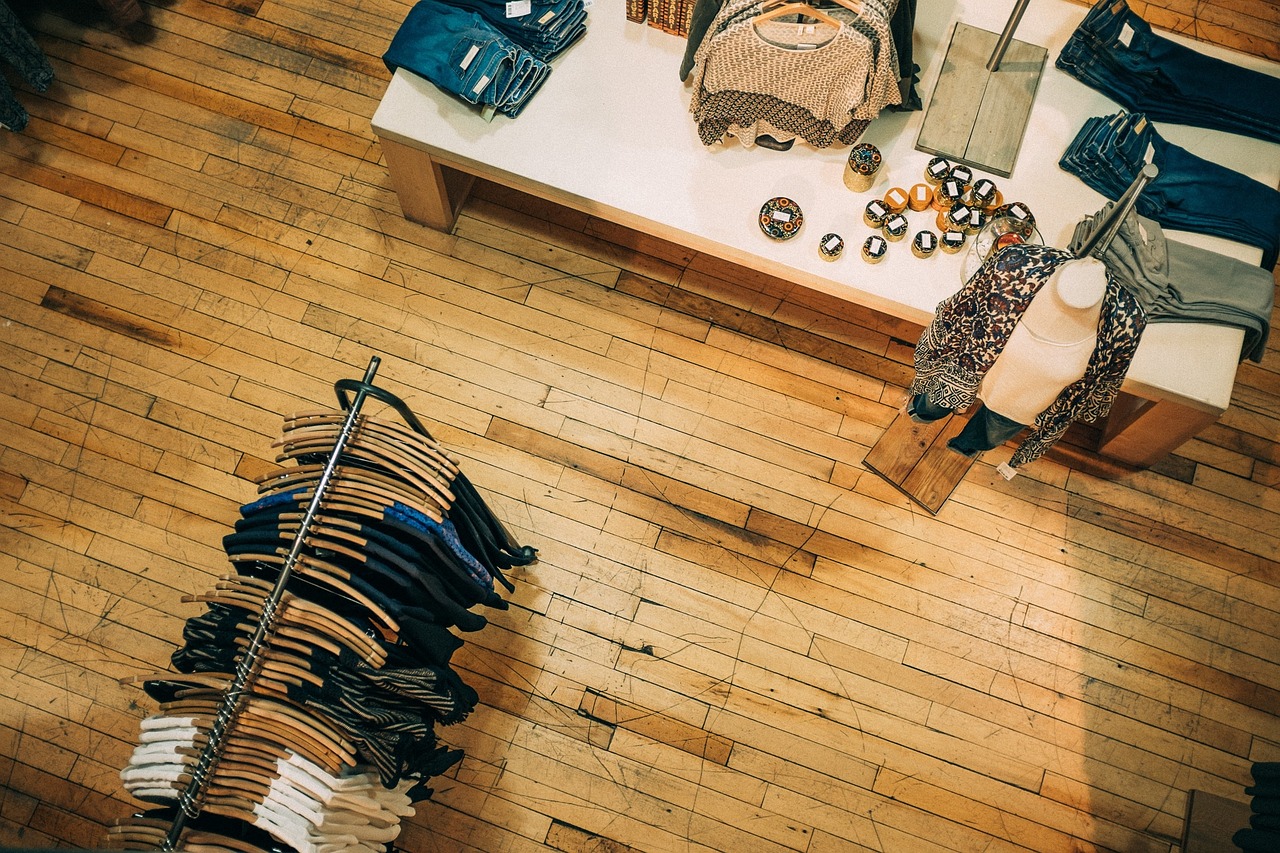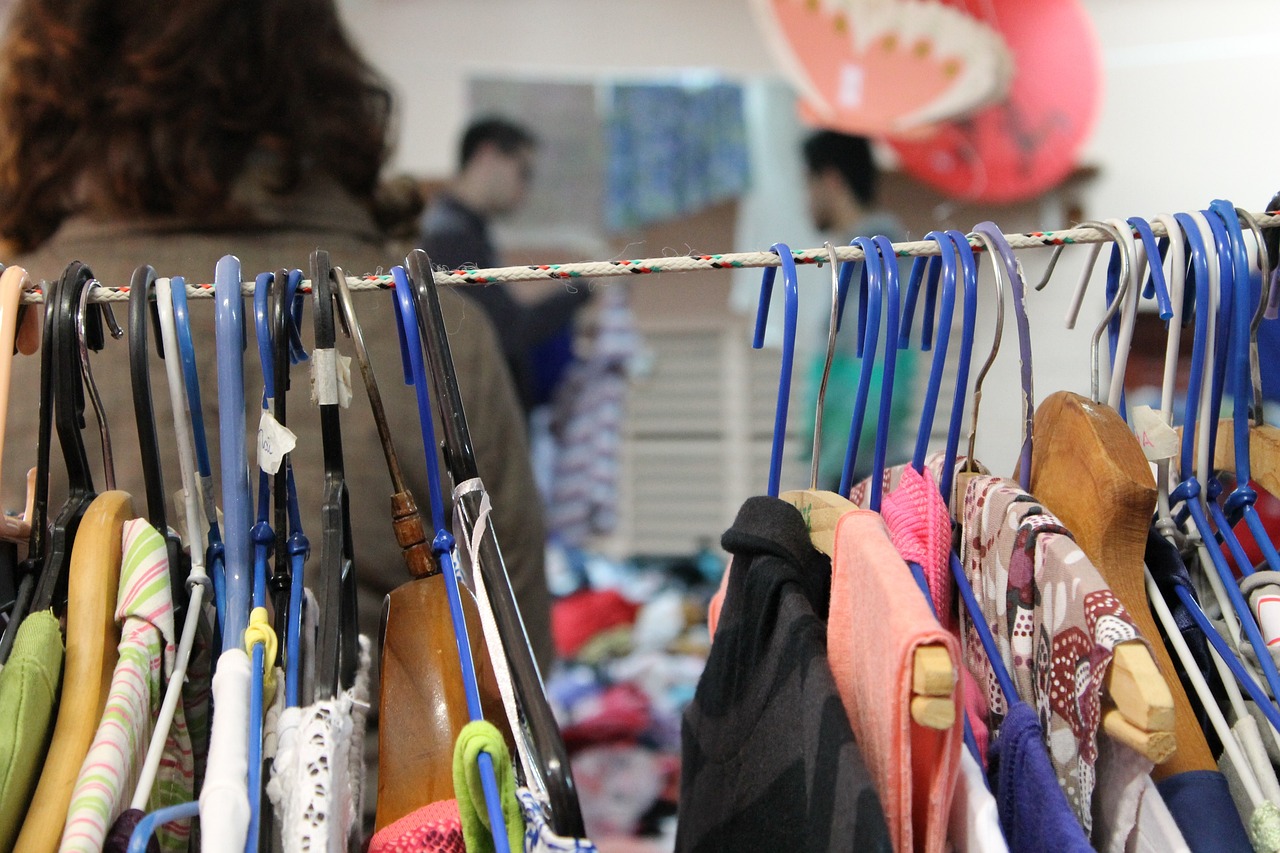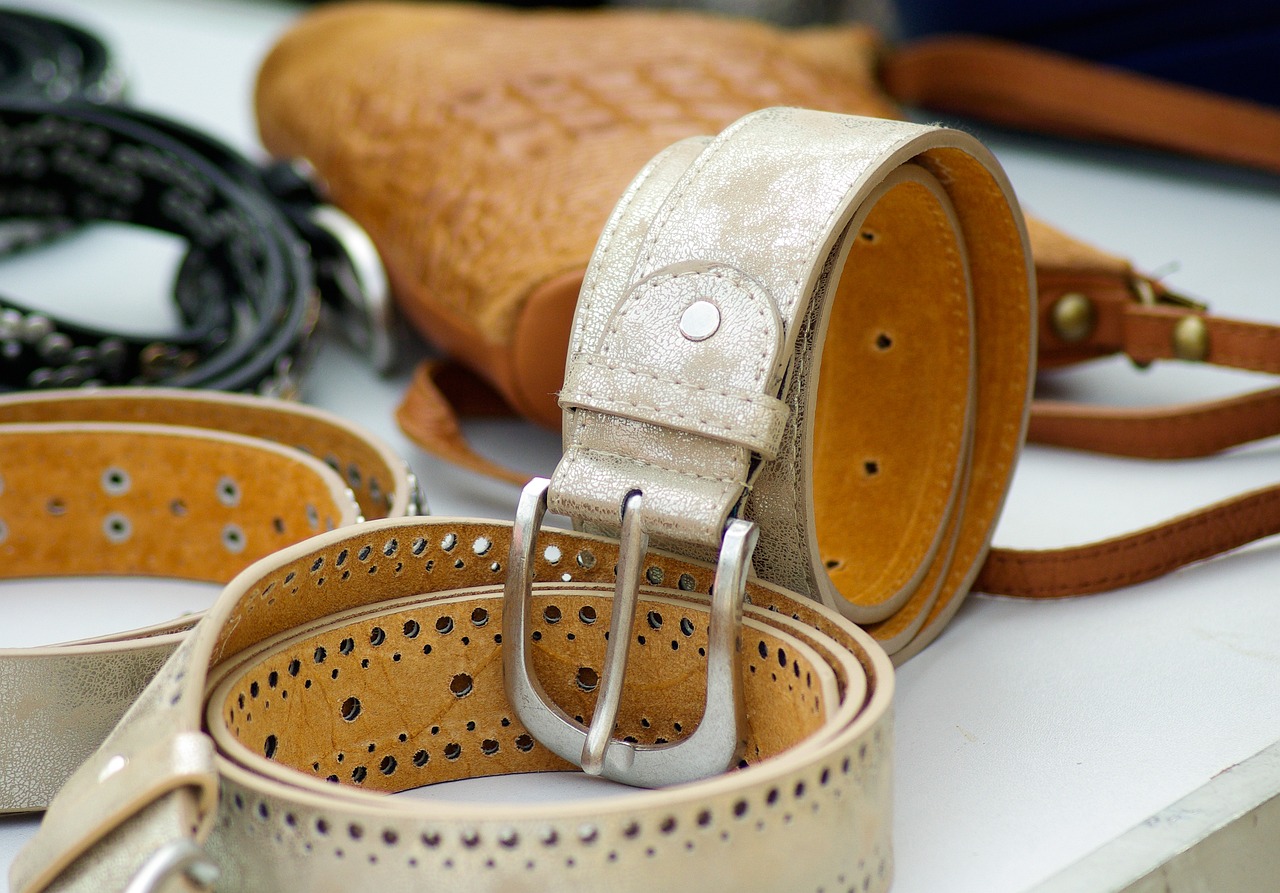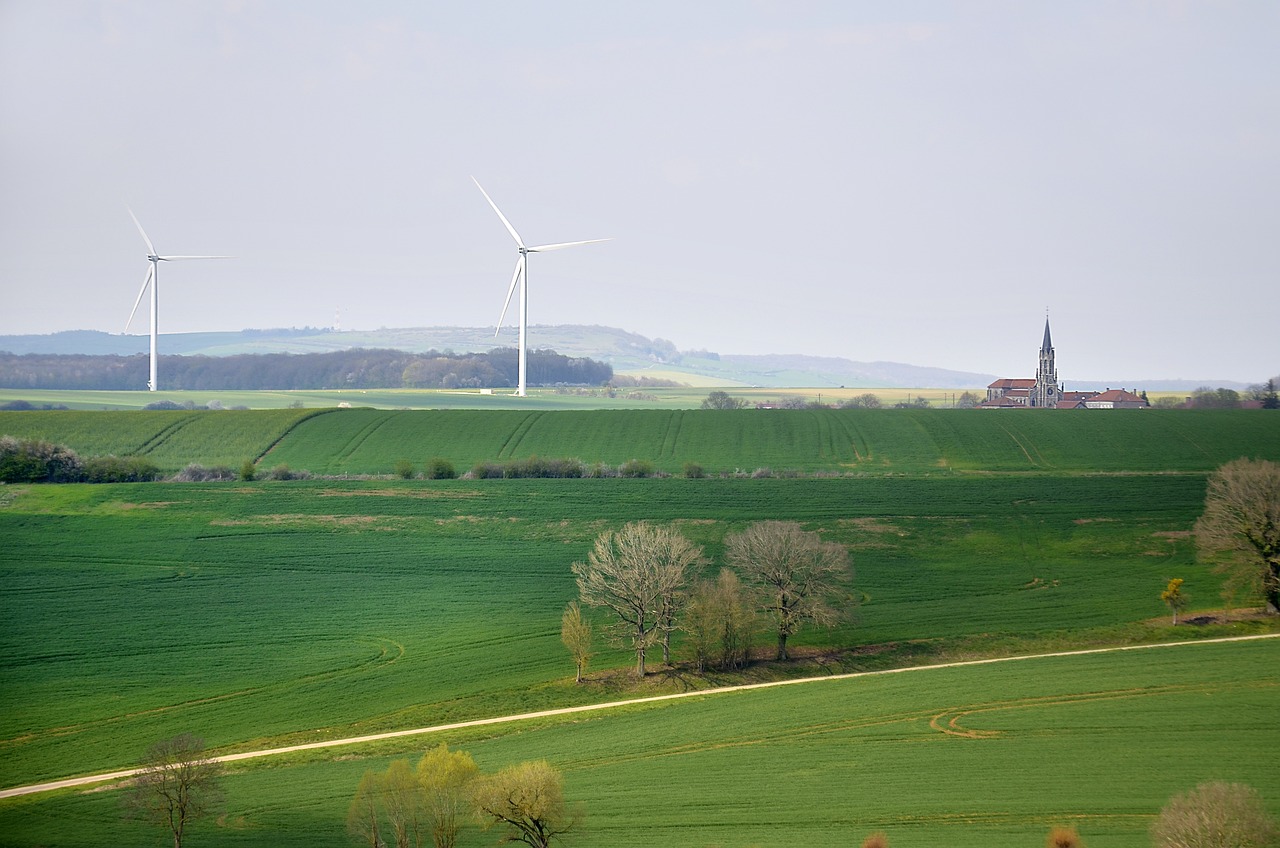How to Quit Fast Fashion and Still Look Chic?
In a world dominated by trends that change faster than the blink of an eye, many of us find ourselves caught in the whirlwind of fast fashion. It's tempting, isn't it? Those eye-catching advertisements, the allure of low prices, and the promise of looking fabulous without breaking the bank can be hard to resist. But what if I told you that you can still look incredibly chic while making choices that are better for the planet and your wallet? Yes, you can! Transitioning away from fast fashion doesn't mean sacrificing your style. In fact, it opens up a whole new world of creativity and sustainability that can enhance your wardrobe and your sense of self. Let’s dive into how you can make this transition smoothly and stylishly!
Fast fashion refers to inexpensive clothing produced rapidly by retailers in response to the latest trends. It’s all about getting that runway look into your closet at lightning speed. But have you ever stopped to think about the environmental and ethical implications of this phenomenon? The fashion industry is one of the largest polluters in the world. From the excessive water usage to the harmful chemicals used in production, the impact is staggering. Moreover, the workers behind these garments often face poor working conditions and unfair wages. Recognizing these issues is the first step toward making a change in your consumer habits.
When you choose sustainable fashion, you’re not just making a statement about your style; you’re also promoting ethical production and environmentally friendly practices. The benefits are numerous! By opting for sustainable clothing, you contribute to:
- Reduced Waste: Sustainable fashion encourages recycling and upcycling, which means less waste in landfills.
- Better Working Conditions: Ethical brands prioritize fair wages and safe environments for their workers.
- Positive Impact on the Planet: Sustainable practices help to conserve resources and protect ecosystems.
Imagine wearing clothes that not only make you look good but also feel good because you know they’re doing right by the planet and its people. Isn't that a win-win?
One of the most important shifts in mindset when moving away from fast fashion is embracing the concept of quality over quantity. Instead of filling your closet with numerous cheap items that wear out quickly, consider investing in high-quality garments that stand the test of time. Think of your wardrobe as a curated collection rather than a chaotic assortment. Each piece should tell a story, reflect your personal style, and be versatile enough to wear on different occasions.
Now, how do you know if a garment is truly high-quality? Recognizing quality fabrics is key! Look for materials like:
- Organic Cotton: Soft, breathable, and produced without harmful pesticides.
- Hemp: Durable and requires minimal water to grow.
- Tencel: Made from sustainable wood sources, it’s biodegradable and silky smooth.
By knowing what to look for, you can make informed purchases that align with your values.
A capsule wardrobe is a game-changer! It consists of versatile pieces that can be mixed and matched to create numerous outfits. To build your own chic and sustainable capsule wardrobe, consider these steps:
- Evaluate your current wardrobe and identify what you truly wear.
- Choose a color palette that complements your style.
- Invest in timeless staples like a classic blazer, a little black dress, and quality denim.
- Add a few statement pieces to express your personality.
With a capsule wardrobe, you’ll find that getting dressed becomes a breeze, and you’ll always look put-together!
Thrifting is not just a trend; it’s a fantastic way to find unique pieces while reducing waste. Imagine uncovering a vintage gem that no one else has! Plus, second-hand shopping is often more affordable than buying new. Here are a few tips for successful treasure hunting:
- Visit local thrift stores and charity shops regularly to find fresh inventory.
- Don’t shy away from online second-hand platforms.
- Keep an open mind; sometimes, items need a little TLC to shine!
In the end, your wardrobe can be a reflection of your personality, values, and creativity.
Choosing to support brands that prioritize ethical production is crucial in this journey. But how do you identify these brands? Look for certifications like Fair Trade, GOTS (Global Organic Textile Standard), and B Corp. These labels indicate a commitment to responsible practices. By supporting these brands, you’re not just making a purchase; you’re voting with your wallet for a better future.
Understanding a brand's production practices helps consumers make informed decisions. Take the time to research and evaluate a brand's commitment to sustainability. Check their website for transparency about sourcing materials, labor practices, and environmental impact. If they’re proud of their practices, they’ll likely share this information openly.
Don’t forget about the hidden gems in your own community! Local designers often focus on sustainable practices and unique styles. By supporting local fashion initiatives, you can discover chic options that are not only stylish but also help your community thrive. Plus, you’ll have a story to tell about where your clothes came from!
Q: What is fast fashion?
A: Fast fashion refers to inexpensive clothing produced rapidly to meet the latest trends, often compromising quality and ethical practices.
Q: How can I identify sustainable brands?
A: Look for certifications like Fair Trade, GOTS, and B Corp, and check for transparency in their production practices.
Q: What is a capsule wardrobe?
A: A capsule wardrobe is a curated collection of versatile pieces that can be mixed and matched, promoting a more sustainable and stylish approach to fashion.
Q: Why is thrifting beneficial?
A: Thrifting reduces waste, supports local charities, and allows you to find unique, one-of-a-kind pieces at affordable prices.

Understanding Fast Fashion
Fast fashion is a term that resonates with many of us, especially in a world where trends come and go at lightning speed. It refers to inexpensive clothing produced quickly by retailers in response to the latest fashion trends. You know the drill—one day, it’s all about oversized blazers, and the next, it’s frilly dresses. But have you ever paused to consider the true cost of these fleeting trends? The reality is that fast fashion comes with a hefty price tag for our planet and its people.
When we talk about fast fashion, we’re not just discussing cheap clothes; we're diving into a complex web of environmental degradation and ethical dilemmas. The production of these garments often involves the use of toxic dyes, excessive water consumption, and harmful chemicals, which can devastate local ecosystems. In fact, the fashion industry is one of the largest polluters globally, contributing to a staggering amount of waste. Did you know that an estimated 92 million tons of textile waste is created each year? That’s like throwing away a garbage truck full of clothes every second!
But the implications of fast fashion don’t stop at environmental concerns. The ethical side of the equation is equally troubling. Many fast fashion brands rely on sweatshops and exploitative labor practices to keep costs low, often paying workers less than a living wage. This raises questions about the human cost of our wardrobe choices. Are we willing to turn a blind eye to the suffering of others for the sake of a trendy outfit?
To truly understand the impact of fast fashion, let’s break it down into a few key areas:
- Environmental Impact: The production processes are resource-intensive, leading to deforestation, pollution, and massive waste.
- Social Impact: Workers in developing countries often face poor working conditions and minimal pay, raising serious ethical concerns.
- Consumer Culture: The rapid turnover of trends encourages a throwaway mentality among consumers, leading to overconsumption and waste.
In light of these challenges, it’s crucial for us as consumers to rethink our shopping habits. By understanding the implications of fast fashion, we can make more informed choices that align with our values. Transitioning to a more sustainable wardrobe isn’t just a trend; it’s a movement towards a better future. So, what can we do? By opting for sustainable alternatives, supporting ethical brands, and embracing practices like thrifting, we can help pave the way for a fashion industry that respects both people and the planet.
In conclusion, understanding fast fashion is the first step in making a change. It’s about recognizing the impact of our choices and taking action to support a more sustainable and ethical fashion landscape. Are you ready to take that step?
Q: What is fast fashion?
A: Fast fashion is the rapid production of inexpensive clothing, designed to keep up with the latest trends, often at the expense of ethical and environmental considerations.
Q: Why is fast fashion bad for the environment?
A: Fast fashion contributes significantly to pollution, waste, and resource depletion due to its production processes and the short lifespan of its products.
Q: How can I transition away from fast fashion?
A: You can start by investing in quality pieces, supporting ethical brands, thrifting, and building a capsule wardrobe that emphasizes versatility and sustainability.

Benefits of Sustainable Fashion
Sustainable fashion is not just a trend; it's a movement that champions **ethical production** and **environmentally friendly practices**. By choosing sustainable clothing, you’re not only enhancing your wardrobe but also making a significant impact on the planet. Imagine wearing pieces that not only look good but also do good! This section delves into the various benefits of sustainable fashion, revealing how it can transform your shopping habits and your style.
One of the most compelling reasons to embrace sustainable fashion is the **reduction of waste**. The fast fashion industry is notorious for its **massive waste generation**. According to statistics, an estimated 92 million tons of textile waste are created globally each year. By opting for sustainable choices, you contribute to minimizing this staggering figure. You might be wondering, "How does my choice make a difference?" Well, every time you choose a sustainable garment over a fast fashion piece, you’re saying no to the cycle of waste and yes to a more responsible way of living.
Moreover, sustainable fashion promotes **better working conditions** for those in the garment industry. Fast fashion often relies on exploitative labor practices, where workers are paid meager wages and work in unsafe conditions. In contrast, ethical brands prioritize fair labor practices, ensuring that workers receive fair compensation and work in safe environments. By supporting these brands, you’re not just buying clothes; you’re supporting a movement that values human rights and dignity.
Another significant advantage of sustainable fashion is its **positive impact on the environment**. Traditional clothing production involves the use of harmful chemicals, excessive water, and non-renewable resources. Sustainable brands, however, focus on eco-friendly materials and processes. For instance, many use organic cotton, recycled polyester, and natural dyes. This shift not only conserves resources but also helps protect our ecosystems. You might think, "But can sustainable fashion be stylish?" Absolutely! Many sustainable brands offer chic designs that are just as trendy as their fast fashion counterparts.
Let’s break down some of the key benefits of sustainable fashion:
- Reduced Environmental Impact: Sustainable practices help in conserving water and reducing pollution.
- Support for Ethical Labor: Many sustainable brands ensure fair wages and safe working conditions.
- High-Quality Products: Sustainable fashion often focuses on durability and timelessness, leading to long-lasting pieces.
- Unique Styles: Thrifting and sustainable brands often offer unique pieces that set you apart from the crowd.
In conclusion, the benefits of sustainable fashion extend far beyond just looking chic. By making conscious choices, you contribute to a healthier planet, support ethical labor practices, and invest in high-quality garments that stand the test of time. So next time you’re about to make a purchase, ask yourself: Is this piece just a trend, or does it contribute to a sustainable future? Your wardrobe can be a reflection of your values, and it’s time to make those values shine!
1. What is sustainable fashion?
Sustainable fashion refers to clothing that is produced, marketed, and consumed in ways that are environmentally and ethically responsible. It focuses on reducing waste, using eco-friendly materials, and ensuring fair labor practices.
2. How can I identify sustainable brands?
Look for brands that provide transparency about their production processes, use sustainable materials, and have certifications like Fair Trade or GOTS (Global Organic Textile Standard).
3. Is sustainable fashion more expensive?
While sustainable fashion can sometimes have a higher upfront cost, it often results in long-term savings due to the durability and timelessness of the garments. Plus, it’s an investment in ethical practices!
4. Can I still be stylish while choosing sustainable fashion?
Absolutely! Sustainable fashion offers a wide range of stylish options that can suit any personal style. Many sustainable brands prioritize chic designs while adhering to ethical practices.
5. How can I start transitioning to sustainable fashion?
Begin by assessing your current wardrobe, investing in high-quality pieces, exploring thrift stores, and researching ethical brands. Small changes can lead to a significant impact!

Quality Over Quantity
When it comes to fashion, many of us have been conditioned to think that more is better. However, the truth is that quality should always take precedence over quantity. Imagine your closet as a treasure chest; would you rather fill it with shiny trinkets that lose their luster after a few wears, or would you prefer to curate a collection of timeless pieces that tell a story and stand the test of time? Investing in high-quality garments not only elevates your style but also fosters a more sustainable approach to fashion.
High-quality clothing is designed to last. While fast fashion brands churn out low-cost items that often fall apart after a handful of washes, sustainable brands focus on craftsmanship and durability. This means that a well-made dress or pair of jeans can accompany you through countless adventures, saving you money in the long run. Think of it like buying a classic car; it may cost more upfront, but it’s an investment that pays off in reliability and style.
Moreover, quality pieces often feature timeless designs that transcend fleeting trends. Instead of following every fashion fad, consider building a wardrobe filled with versatile staples that can be mixed and matched effortlessly. For instance, a well-tailored blazer, a little black dress, or a pair of classic jeans can serve as the foundation of your wardrobe, allowing you to create countless outfits with minimal effort.
So, how do you identify quality garments? Look for fabrics that feel substantial and have a good weight to them. Natural fibers like cotton, wool, and linen are often more durable than synthetic ones. Additionally, examine the stitching; double-stitched seams and reinforced areas indicate a garment that can withstand wear and tear. Paying attention to these details can make a significant difference in your purchasing decisions.
In essence, adopting a mindset not only enhances your personal style but also contributes to a more sustainable fashion ecosystem. By investing in fewer, high-quality pieces, you're making a conscious choice to reduce waste and support ethical practices in the fashion industry. So, the next time you find yourself tempted by a trendy but cheap top, ask yourself: is this piece going to be a cherished part of my wardrobe, or just another fleeting moment of indulgence?
- Why is quality more important than quantity in fashion? Quality garments last longer, are often more stylish, and contribute to a sustainable wardrobe.
- How can I tell if a piece of clothing is high quality? Look for well-constructed seams, durable fabrics, and timeless designs.
- What are some benefits of investing in quality clothing? Investing in quality clothing reduces waste, saves money over time, and supports ethical brands.
- Can I still be fashionable with a smaller wardrobe? Absolutely! A curated wardrobe allows for more creativity and versatility in styling.

Identifying Quality Fabrics
When it comes to building a sustainable wardrobe, one of the most crucial skills you can develop is the ability to identify quality fabrics. After all, what good is a chic outfit if it falls apart after a few washes? Knowing how to discern between high-quality materials and those typically used in fast fashion can save you money in the long run and help you make more eco-friendly choices.
First, let’s talk about the feel of the fabric. High-quality materials often have a certain weight and texture that cheap fabrics simply lack. For example, when you run your fingers over a piece of clothing, pay attention to how it feels. Does it feel soft and luxurious? Or is it scratchy and flimsy? Fabrics like cotton, linen, and wool generally offer a more pleasant tactile experience compared to synthetic options.
Next, consider the breathability of the fabric. Natural fibers such as cotton and linen allow air to circulate, keeping you cool and comfortable. In contrast, synthetic fabrics like polyester can trap heat and moisture, leading to discomfort. If you find yourself sweating through your clothes on a warm day, it might be time to rethink your fabric choices!
Another essential factor is the durability of the fabric. High-quality materials are designed to withstand the test of time. For instance, if you’re looking at a cotton shirt, check the stitching. Is it even and tight? Loose threads or uneven seams can indicate a rushed production process typical of fast fashion. Additionally, fabrics like denim and tweed are known for their strength and longevity, making them excellent choices for a sustainable wardrobe.
Moreover, understanding the fabric's origin can also provide insight into its quality. Fabrics sourced from sustainable practices, like organic cotton or Tencel, are often produced with less environmental impact and better working conditions. When shopping, look for labels that indicate sustainable sourcing or certifications such as GOTS (Global Organic Textile Standard) or OEKO-TEX.
Lastly, don’t be afraid to ask questions! When shopping in-store, engage with the staff about the fabric's origin and care instructions. If you’re shopping online, take a moment to read product descriptions and customer reviews. Knowing how to care for your garments is just as important as choosing the right fabric. For instance, some materials require gentle washing or air drying to maintain their quality.
In summary, identifying quality fabrics is about more than just aesthetics; it's a vital skill for anyone looking to embrace sustainable fashion. By considering factors like feel, breathability, durability, and sourcing, you can make informed choices that reflect your style while also being kind to the planet. So, the next time you're out shopping, keep these tips in mind and elevate your wardrobe with pieces that are both chic and sustainable.
- How can I tell if a fabric is sustainable? Look for certifications like GOTS or OEKO-TEX, and prefer natural fibers over synthetic ones.
- What are some examples of high-quality fabrics? Cotton, linen, wool, silk, and high-grade denim are excellent choices.
- How should I care for high-quality fabrics? Always check care labels, but generally, hand washing and air drying are gentler on fabrics.
- Is it worth investing in quality fabrics? Absolutely! Quality fabrics last longer, look better, and are more sustainable in the long run.

Building a Capsule Wardrobe
Building a capsule wardrobe is like creating your own personal fashion sanctuary. Imagine walking into your closet and feeling a wave of calm wash over you, knowing that every piece hanging there is not only stylish but also versatile. A capsule wardrobe is a collection of essential clothing items that can be mixed and matched, allowing you to create numerous outfits without the clutter and chaos of fast fashion. It’s about quality, not quantity, and it’s a fantastic way to embrace sustainability while still looking chic.
So, how do you get started on this exciting journey? First, you need to evaluate your personal style. Think about the colors, patterns, and fits that make you feel confident and comfortable. You want to choose pieces that you absolutely love, because if you don’t love it, you won’t wear it. Once you have a clear vision of your style, it’s time to start curating your collection. Here are some key steps to consider:
- Assess Your Current Wardrobe: Take a good look at what you already own. Identify items that you wear frequently and those that just take up space. This will help you understand your style preferences and gaps in your wardrobe.
- Choose a Color Palette: Select a color scheme that reflects your personality. Neutral colors are fantastic for versatility, but don’t shy away from adding a splash of color that makes your heart sing.
- Invest in Key Pieces: Focus on acquiring timeless staples such as a classic white shirt, a tailored blazer, a pair of well-fitting jeans, and a little black dress. These items can be dressed up or down, making them perfect for any occasion.
Once you’ve selected your key pieces, it’s essential to think about how they all work together. The magic of a capsule wardrobe lies in its ability to create a variety of outfits from just a few items. For example, that classic white shirt can be paired with jeans for a casual day out or tucked into a pencil skirt for a more formal look. By mixing and matching, you’ll find that you can create countless combinations, keeping your style fresh and exciting.
Another important aspect is to consider the seasonality of your wardrobe. Depending on where you live, you may need to adjust your capsule wardrobe to accommodate different weather conditions. You might have a summer capsule that includes lighter fabrics and vibrant colors, while your winter capsule could feature warmer materials and darker hues. Think of your wardrobe as a living entity that evolves with you.
Lastly, don’t forget to keep it fun! Building a capsule wardrobe should be an enjoyable experience, not a chore. Experiment with accessories like scarves, hats, and jewelry to add personality to your outfits. Remember, the goal is to create a wardrobe that reflects who you are while being mindful of the environment.
By embracing the concept of a capsule wardrobe, you’re not just making a fashion statement; you’re also making a commitment to sustainability. You’ll find that your closet becomes a reflection of your values, showcasing your dedication to ethical fashion while ensuring you always look chic and put together.

Thrifting and Second-Hand Shopping
Thrifting and second-hand shopping have become more than just a trend; they are a lifestyle choice that resonates with the growing desire for sustainability. Imagine walking into a thrift store, where every rack holds the potential for a fashion treasure. It's like a treasure hunt, but instead of gold coins, you find unique garments that tell a story. Not only does this practice allow you to discover one-of-a-kind pieces, but it also significantly reduces waste. By choosing second-hand, you’re actively participating in a circular economy, where clothing is reused, repurposed, and kept out of landfills.
But what makes thrifting so appealing? For starters, it's a fantastic way to express your personal style without breaking the bank. You can find vintage pieces that are not only chic but also carry a sense of history. Have you ever found a stunning 90s jacket or a classic pair of jeans that fit like a glove? Those moments are what make thrifting exhilarating. Plus, the price tags are often a fraction of what you’d pay for new items at fast fashion retailers. Think of it as a win-win situation: you save money while also being kinder to the planet.
When embarking on your thrifting adventure, there are a few tips to keep in mind to enhance your experience:
- Be Patient: Thrifting is not a quick fix. Sometimes, you have to dig through piles to find that hidden gem.
- Know Your Style: Having a clear idea of what you’re looking for can help you navigate through the racks more efficiently.
- Check for Quality: Always inspect items for wear and tear. Look for high-quality fabrics that will last.
- Visit Often: Inventory changes frequently, so make it a habit to visit your local thrift stores regularly.
Moreover, thrifting is not just limited to clothing. You can find accessories, shoes, and even home decor items that add a unique touch to your wardrobe or living space. Each piece can be a conversation starter, showcasing your commitment to sustainable fashion and your eye for style. So, next time you feel the urge to shop, consider heading to your local thrift store instead of the mall. You might just come home with something extraordinary!
In addition to thrift stores, online platforms have made second-hand shopping even more accessible. Websites and apps dedicated to reselling clothes allow you to browse thousands of items from the comfort of your home. This opens up a world of possibilities, as you can find items from all over the globe. Just remember to check the seller's ratings and reviews to ensure a smooth transaction.
As you embrace thrifting and second-hand shopping, not only are you enhancing your wardrobe, but you are also supporting a more sustainable future. It’s a small change that can lead to significant impacts, and it feels good to know that your fashion choices reflect your values. So, why not take the plunge and explore the world of thrift stores? You might be surprised at what you find!
1. Is thrifting really more sustainable than buying new clothes?
Yes! Thrifting extends the life of clothing, reducing waste and the demand for new production, which often harms the environment.
2. How do I find good thrift stores?
Research local thrift shops online or ask friends for recommendations. You can also explore community events or pop-up thrift markets.
3. Can I find brand-name items while thrifting?
Absolutely! Many thrift stores receive donations from individuals who may have brand-name items that they no longer wear. Keep an eye out!
4. What should I look for when thrifting?
Focus on quality fabrics, timeless styles, and items that fit well. Don’t be afraid to try things on and get creative with your finds!

Supporting Ethical Brands
In a world where fast fashion dominates, choosing to support ethical brands is not just a personal style choice; it's a statement about the kind of future we want to create. When you opt for brands that prioritize ethical production, you're not just buying clothes—you're investing in a philosophy that values sustainability, fair labor practices, and environmental responsibility. But how do you identify these brands? It might feel like searching for a needle in a haystack, but with a little guidance, you can easily spot the gems that align with your values.
One of the first steps in supporting ethical brands is to research their practices. Many companies make claims about their sustainability efforts, but not all of them are created equal. Look for brands that are transparent about their supply chains and openly share information about their labor practices and environmental impact. Websites like Good On You offer ratings for various fashion brands based on their ethical practices, making it easier for you to make informed decisions. You might be surprised to find that some popular brands that seem ethical at first glance may not live up to their claims.
Moreover, many ethical brands often have certifications that validate their commitment to sustainability. Here’s a quick table to help you understand some common certifications:
| Certification | Description |
|---|---|
| Fair Trade Certified | Ensures fair wages and working conditions for producers. |
| Global Organic Textile Standard (GOTS) | Guarantees organic status of textiles and ethical manufacturing. |
| OEKO-TEX | Tests for harmful substances in textiles, ensuring safety for consumers. |
| Certified B Corporation | Indicates a company meets high standards of social and environmental performance. |
Another fantastic way to support ethical brands is by engaging with local designers. These talented individuals often focus on sustainable practices and unique styles that reflect their communities. By purchasing from local designers, you not only get one-of-a-kind pieces but also contribute to the local economy. Plus, it feels great to wear something that has a story behind it! You might find that local markets and craft fairs are treasure troves of chic, sustainable fashion options.
Lastly, remember that your voice matters. When you support ethical brands, share your experience on social media, write reviews, and engage in conversations about sustainability. This not only helps spread the word but also encourages brands to continue their ethical practices. After all, when consumers demand change, brands have no choice but to listen.
In conclusion, supporting ethical brands is a powerful way to express your style while making a positive impact on the world. By doing your research, looking for certifications, engaging with local designers, and sharing your experiences, you can help shift the fashion industry towards a more sustainable future. So, the next time you're about to make a purchase, ask yourself: "Is this brand contributing to a better world?" If the answer is yes, then you're not just looking chic—you're making a difference!
- What are ethical brands? Ethical brands prioritize sustainability, fair labor practices, and environmental responsibility in their production processes.
- How can I find ethical brands? Research brands using resources like Good On You, check for certifications, and read reviews to understand their practices.
- Are ethical clothes more expensive? While they can be pricier, investing in quality ethical clothing often leads to long-term savings and a more sustainable wardrobe.
- Can I support ethical fashion on a budget? Yes! Thrifting, shopping second-hand, and supporting local designers can help you find stylish options without breaking the bank.

Researching Brand Practices
When it comes to making sustainable fashion choices, is absolutely essential. In a world where every brand claims to be eco-friendly, how do you sift through the noise and find the ones that genuinely prioritize ethical production? It can feel like searching for a needle in a haystack, but with a bit of effort and know-how, you can uncover brands that align with your values.
Start by looking for transparency in a brand's supply chain. A reputable brand should openly share information about where their materials come from, how their clothes are made, and who is making them. This is not just a marketing gimmick; it’s a reflection of their commitment to ethical practices. For instance, brands that provide detailed information about their factories, the wages of their workers, and the environmental impact of their production processes are often more trustworthy.
Another effective way to gauge a brand's commitment to sustainability is by checking for certifications. Look for labels like Global Organic Textile Standard (GOTS), Fair Trade, or OEKO-TEX. These certifications indicate that the brand meets specific environmental and social criteria. However, don’t stop at just checking for these labels; dig deeper. Research what these certifications mean and how rigorously they are enforced. Sometimes, brands may display certifications without adhering to the standards consistently.
Social media can also be a powerful tool in your research arsenal. Follow brands on platforms like Instagram or Twitter to see how they engage with their audience. Are they promoting sustainable practices, or are they focused solely on sales? Often, brands that are genuinely committed to sustainability will share behind-the-scenes content that showcases their ethical practices, such as eco-friendly materials or fair labor conditions. Engaging with these brands through comments or direct messages can also provide insight into their values and practices.
It’s also helpful to read reviews and testimonials from other consumers. Websites, blogs, and forums can be treasure troves of information where fellow shoppers share their experiences with various brands. Look for reviews that specifically mention the brand's sustainability efforts or ethical practices. This can give you a clearer picture of what to expect when you decide to make a purchase.
Lastly, consider reaching out directly to brands with your questions. A reputable brand should be willing to engage with consumers and provide answers about their practices. Here’s a quick table summarizing the key points to consider when researching brand practices:
| Factor | What to Look For |
|---|---|
| Transparency | Information about supply chain and production processes |
| Certifications | GOTS, Fair Trade, OEKO-TEX |
| Social Media Engagement | Authentic content showcasing sustainability efforts |
| Consumer Reviews | Feedback on sustainability and ethical practices |
| Direct Communication | Willingness to answer consumer inquiries |
By taking the time to research and evaluate these aspects, you can make informed decisions that contribute to a more sustainable wardrobe. Remember, every little effort counts, and by supporting brands that align with your values, you’re not just looking chic—you’re also making a positive impact on the world.
Q: How can I tell if a brand is truly sustainable?
A: Look for transparency in their supply chain, check for certifications, and read consumer reviews. Engaging with the brand on social media can also provide insights into their practices.
Q: Are all sustainable brands expensive?
A: Not necessarily. While some sustainable brands may have higher price points due to quality and ethical practices, there are affordable options available, especially when considering second-hand shopping.
Q: What are some examples of sustainable fashion brands?
A: Brands like Reformation, Patagonia, and Everlane are known for their commitment to sustainable practices. However, always do your research to ensure they align with your values.
Q: Can I still shop at fast fashion stores?
A: While it's best to minimize fast fashion purchases, if you do shop there, consider buying second-hand or only when absolutely necessary. Every small change can make a difference!

Engaging with Local Designers
When it comes to sustainable fashion, one of the most rewarding paths you can take is . Not only does this practice support your community, but it also opens up a treasure trove of unique styles that you won't find in mainstream retail. Think about it: every piece crafted by a local designer often tells a story, reflecting the culture and creativity of your area. By choosing to shop locally, you’re not just buying clothes; you’re investing in the artisans who pour their heart and soul into every stitch.
Local designers typically prioritize ethical production practices and often use sustainable materials. This means that when you wear their creations, you can feel good knowing that you’re making a positive impact on the environment. Plus, many local brands focus on limited runs, which means you’re less likely to bump into someone wearing the same outfit at a party. It’s like wearing a piece of art that’s uniquely yours!
To find local designers, consider attending local craft fairs, pop-up markets, or fashion shows. These events are fantastic opportunities to discover hidden gems and connect with the creators behind the brands. You can also explore social media platforms like Instagram, where many local designers showcase their collections. By following them, you can stay updated on their latest designs and upcoming events.
Engaging with local designers goes beyond just shopping; it’s about building relationships. Many designers appreciate feedback and often welcome collaboration ideas. If you have a vision for a piece, don’t hesitate to reach out! This kind of interaction not only fosters community but also encourages a more personalized fashion experience.
Moreover, supporting local designers often leads to discovering sustainable practices that might not be as prevalent in larger brands. For instance, some might use recycled materials or implement zero-waste production techniques. This knowledge can empower you as a consumer, allowing you to make more informed choices in your wardrobe.
In summary, engaging with local designers is a chic and sustainable way to enhance your wardrobe while supporting your community. By choosing to invest in local fashion, you’re not just purchasing clothing; you’re embracing a lifestyle that values creativity, sustainability, and ethical practices. So the next time you think about refreshing your closet, consider the rich possibilities that local designers have to offer!
- How can I find local designers in my area?
Check out local craft fairs, fashion markets, or search social media platforms like Instagram for designers in your community.
- Are local designers more expensive than fast fashion?
While some local designers may have higher price points due to ethical practices, many offer affordable options that are worth the investment for their quality and uniqueness.
- Can I collaborate with local designers?
Absolutely! Many local designers welcome feedback and collaboration ideas, making it a great way to create something personal and unique.
Frequently Asked Questions
- What is fast fashion?
Fast fashion refers to the rapid production of inexpensive clothing by retailers, designed to meet the latest trends. This approach often leads to significant environmental and ethical concerns, as it promotes overconsumption and waste.
- Why should I switch to sustainable fashion?
Switching to sustainable fashion can help reduce waste, improve working conditions for garment workers, and lessen the overall environmental impact of the fashion industry. Sustainable choices not only benefit the planet but also promote a more ethical and conscious approach to shopping.
- How can I identify quality fabrics?
To identify quality fabrics, look for natural materials like organic cotton, linen, or Tencel, which are not only durable but also eco-friendly. Checking the fabric weight, texture, and stitching can also give you clues about its quality. Remember, a well-made garment will feel good and last longer!
- What is a capsule wardrobe?
A capsule wardrobe is a curated collection of versatile clothing pieces that can be mixed and matched to create various outfits. The idea is to focus on quality over quantity, allowing you to maintain a stylish look while minimizing clutter and waste.
- How do I start thrifting effectively?
To start thrifting effectively, visit local thrift stores or online second-hand platforms. Keep an open mind, be patient, and look for unique pieces that resonate with your style. Always check the quality of the items and don't hesitate to negotiate prices!
- How can I support ethical brands?
Supporting ethical brands involves researching their production practices, understanding their commitment to sustainability, and choosing to purchase from companies that prioritize ethical labor and eco-friendly materials. Look for certifications and transparency in their practices.
- Are local designers a good option for sustainable fashion?
Absolutely! Local designers often focus on sustainable practices and unique styles that reflect the community's culture. By supporting them, you not only get chic options but also contribute to the local economy and sustainable fashion initiatives.



















